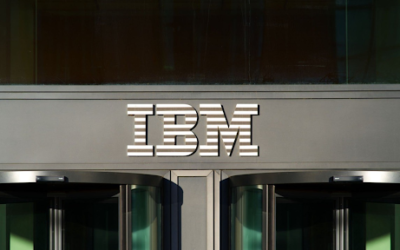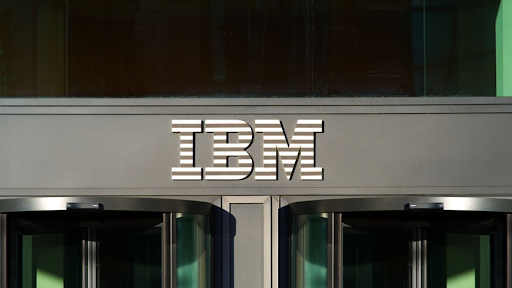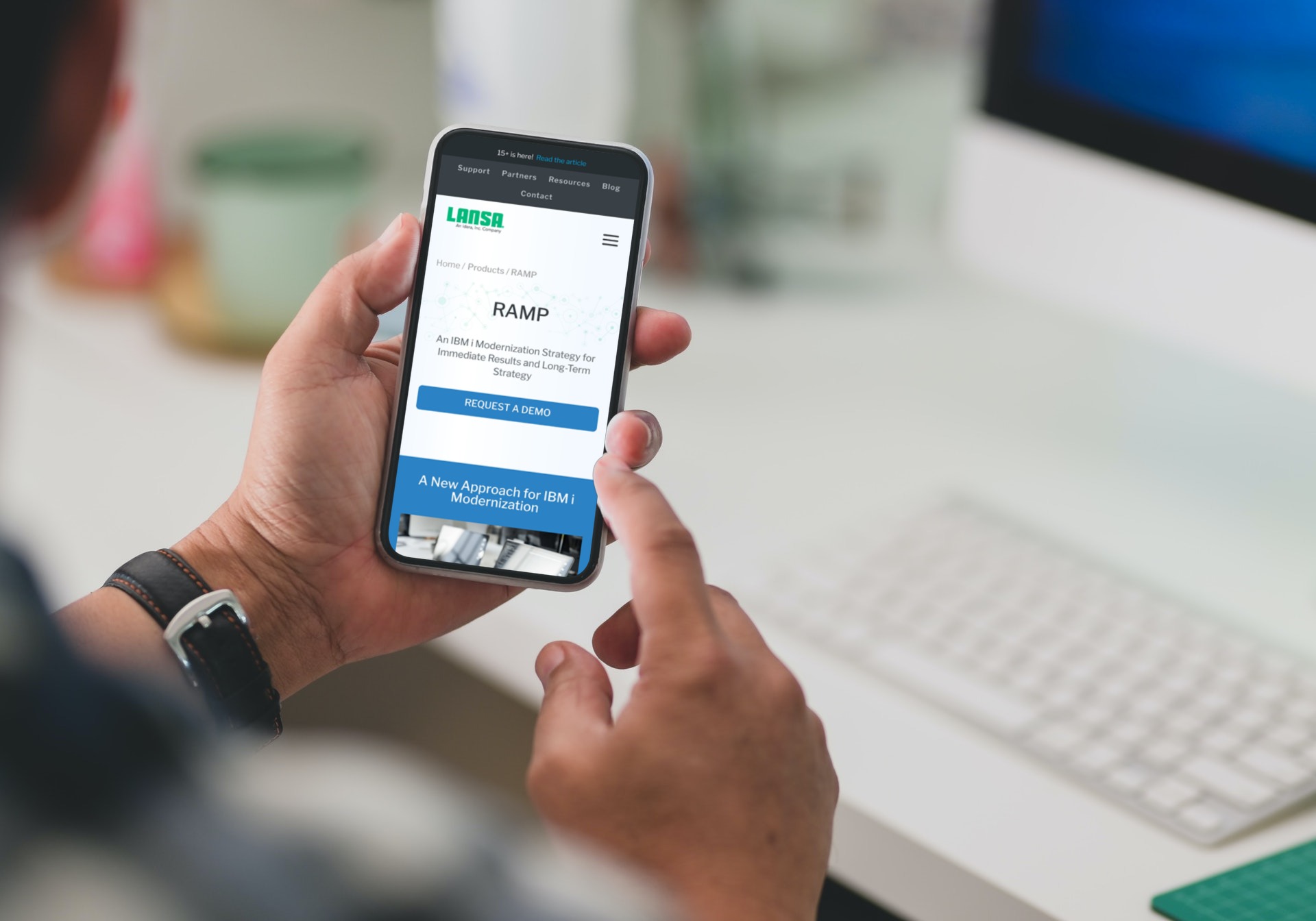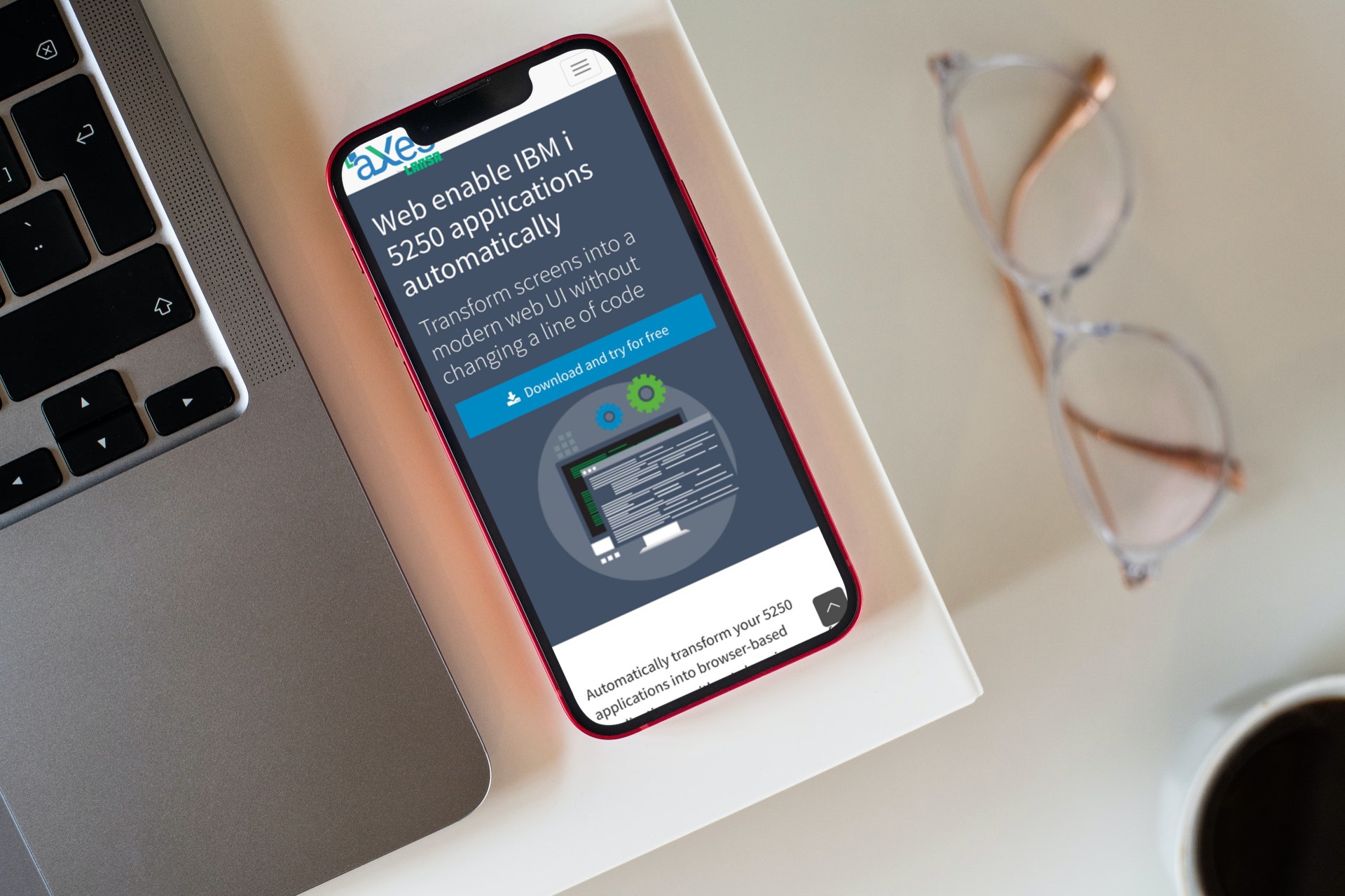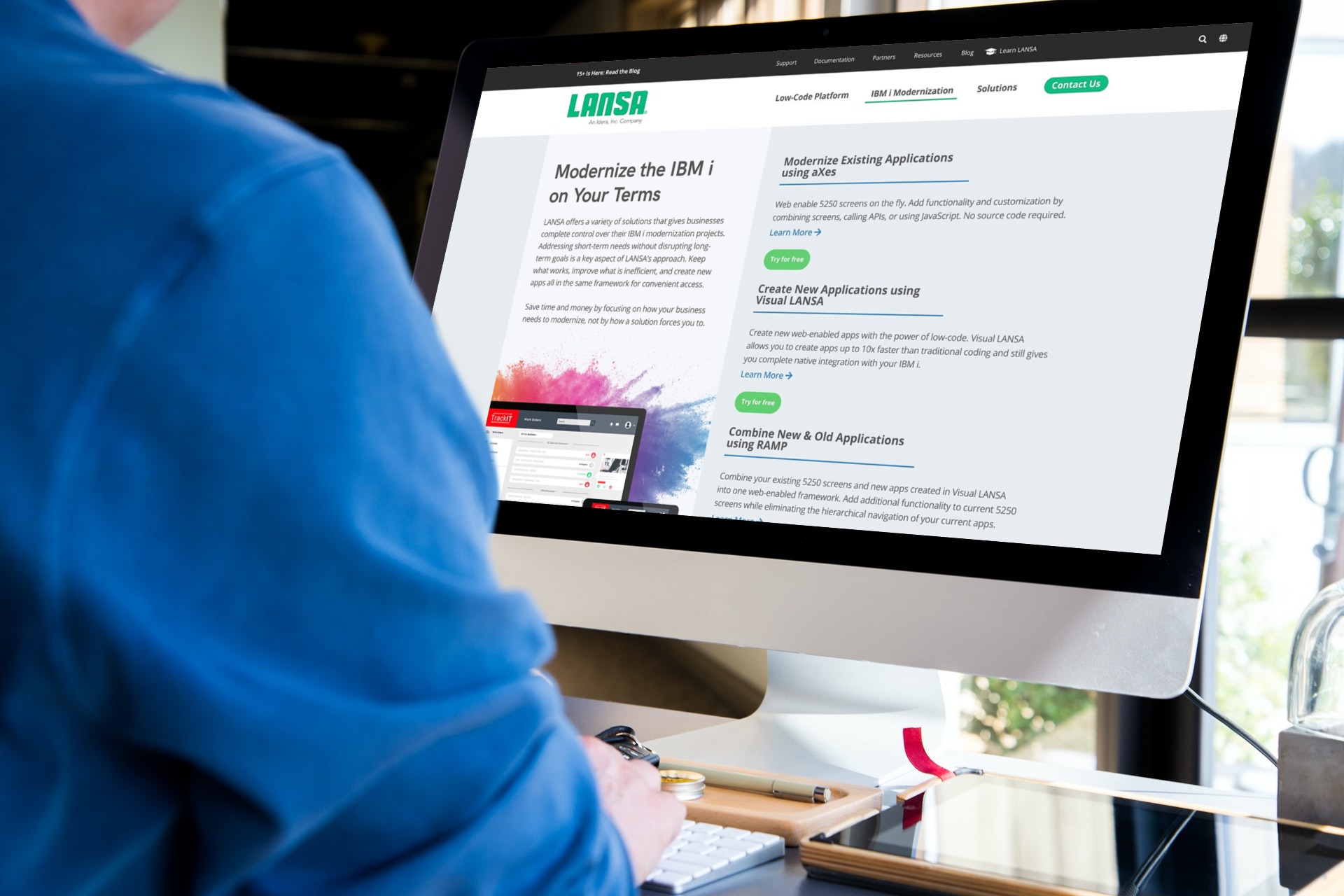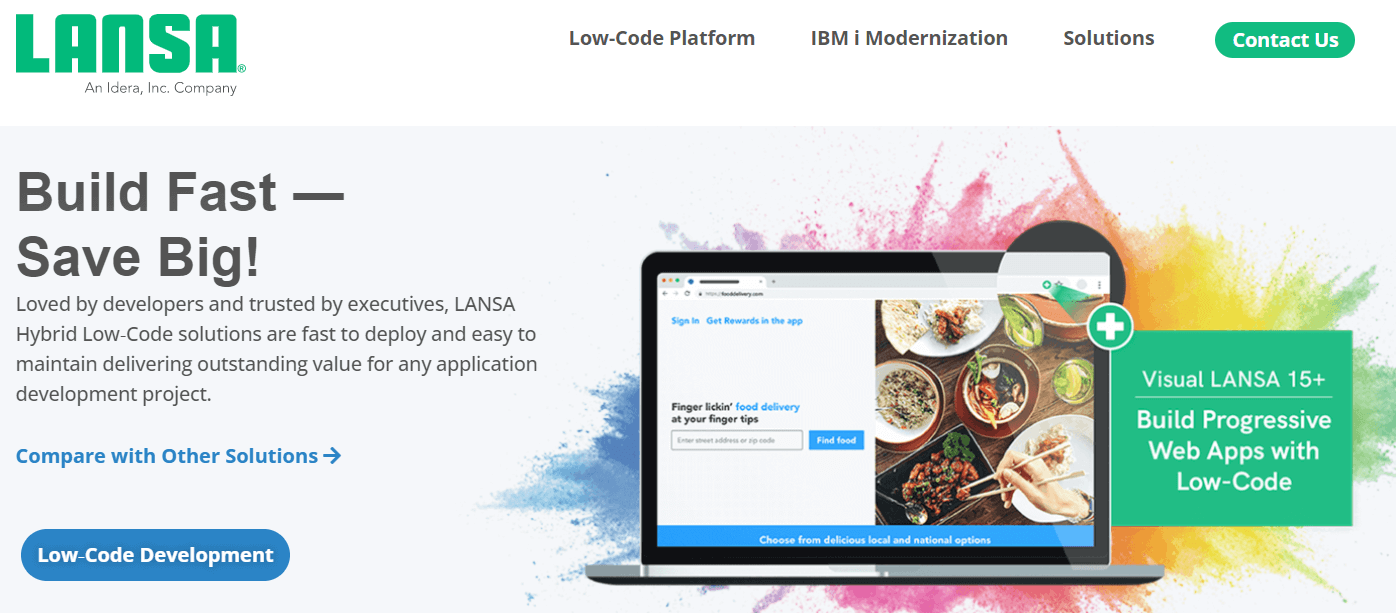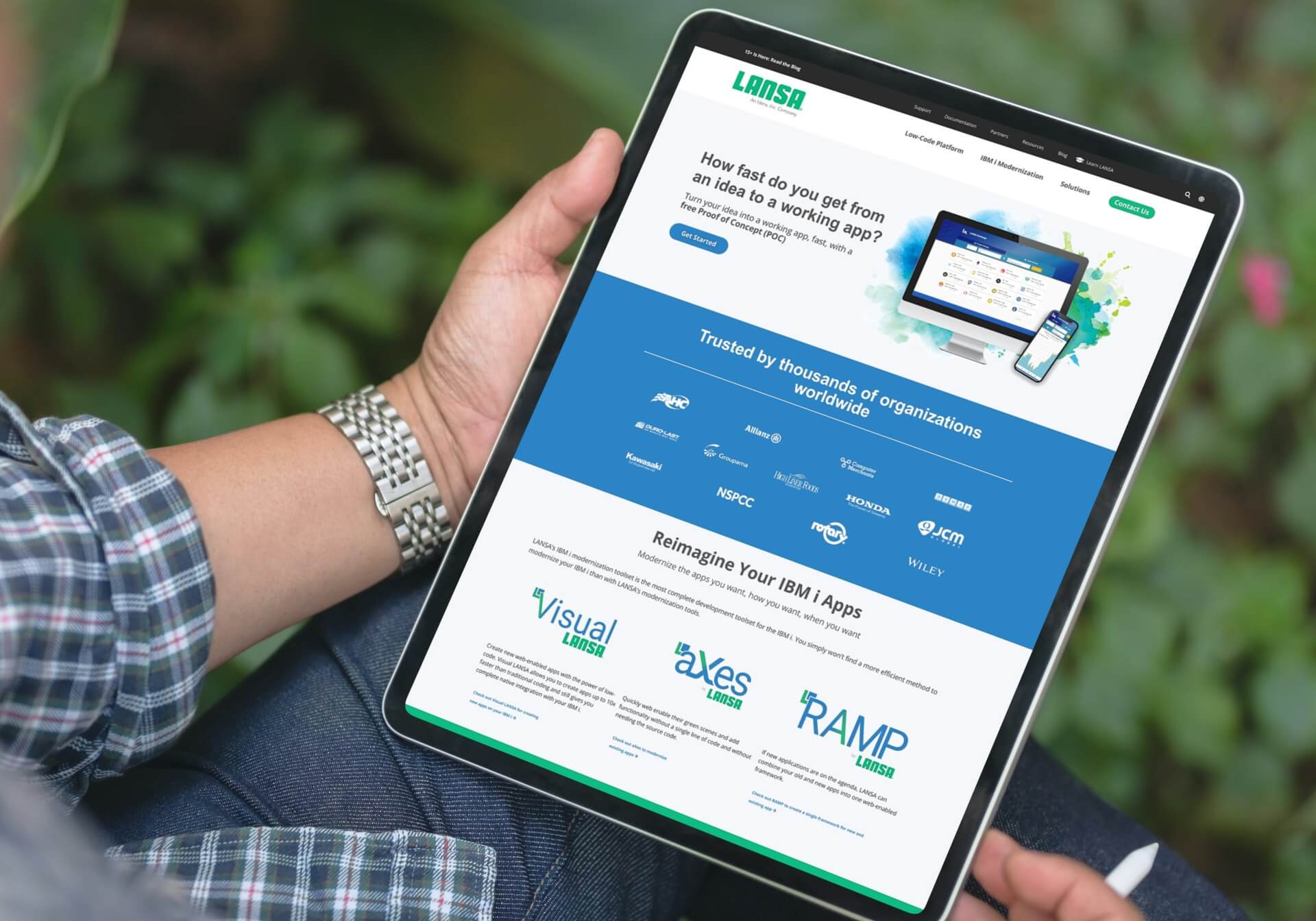There is an opinion that the IBM AS400 is dead. But is it so? What if you do an IBM i modernization? In this article, we will discuss the benefits of using the IBM AS400 and modernization strategies to upgrade legacy IBM i applications.
What Is AS400?
AS400 is a computer system that is mainly used by small and medium businesses. It has its own operating system OS/400, many core functions an embedded database. IBM introduced it in 1988 and it has been constantly updated and improved since then.
The main advantages of this system are scalability, robustness, reliability, security, and low cost.
What Is The AS400 Operating System (iSeries)?
As we wrote above, the AS400 family of computers had its own OS/400 operating system. During its existence, it went through several re-brandings and in 2000 it was renamed to iSeries. Its latest version is known under the name IBM i.
iSeries is a multi-user operating system. Let’s list the main features of this IBM i system:
- Embedded DB2 database.
- Single-level memory. Accessing disk memory is the same as accessing operational memory.
- High security.
- Backward compatible with earlier versions of the IBM AS/400.
- Tight integration with hardware platform, which makes it impossible to install this OS on other server systems.
- Ability to work for a long time without support.
What Is The Difference Between IBM i And AS400?
IBM i is an operating system that is designed to run on the AS400 family of computers. It is a modern upgraded version of the first OS/400 operating system. In turn, AS400 hardware is also constantly upgraded and works in conjunction with the IBM i operating system.
Thus, the differences between the IBM i and AS400 are the same as the differences between software and hardware. Therefore, it is incorrect to compare them.
Is The IBM AS/400 Software Dead?
There is a misconception that the IBM AS/400 software is dead. However, we cannot agree with this. It is still very popular today and a lot of modern companies use it to perform critical functions.
Main advantages of AS/400:
- High level of program and data security.
- Enterprise-class reliability, availability for near 100% uptime.
- High performance, AS/400 has power processors that are 3-5 times more powerful than the competition.
- Reliable integrated database.
- The AS/400 is constantly updated to provide the latest features that today’s businesses demand.
- Availability of a cloud environment.
- High scalability. You can start with an inexpensive server and easily scale up to a more powerful one as your business needs grow.
- Backward compatibility. You can run applications developed using legacy technologies on new software without modification.
All these advantages make the IBM AS/400 indispensable today.
What Are The Modernization Strategies We Can Use To Modernize AS400?
Upgrading the AS400 is a complex and lengthy process that comes with some risks. Therefore, before starting the modernization process, you need to choose a strategy. Unfortunately, there is no single strategy for upgrading AS400 applications. You can use one or more different strategies depending on your application and goals.
The choice of an upgrade strategy is complex, as there are no clear criteria for when and which strategy to use. Below we list what modernization strategies exist.
Screen scraping
Screen scraping is the provision of a graphical home screen in an application or web browser. At the same time, the principle of operation of the old application remains unchanged. Screen scraping provides upgrades at the presentation layer only.
Adding a new user interface
Creating a new user interface works the same as screen scraping, but in addition to that, developers write scripts that recognize screens. By using scripts to decide how to move from screen to screen, they can turn the original screen content into a new view. For example, they can turn a green screen into a browser. With a script, you can also hide and/or complete screen content.
As with the previous strategy, the legacy application’s logic and functionality remain unchanged.
Exposing business functions as callable services
Exposing business functions as callable services allows you to keep the application’s business functions and make them available to other applications. This method examines legacy applications and defines business functionality. After that, web services are created that implement the selected business functions.
If you need to execute a business function, then you should call the appropriate web service for this. This allows business functions from legacy applications to be retained and reused in other applications.
Migrating the application
Migrating the application is a technique whereby you can replace individual functional blocks in a legacy application. It allows you to modernize individual business functions, rather than the whole application. The advantage of this approach is that you can modernize in stages.
Re-hosting the application
Re-hosting is the transfer of legacy applications to another computing platform. At the same time, legacy applications work without changes, but hardware and software are new. This method allows you to discard old hardware and operating systems.
Outsourcing the application
Application outsourcing allows you to transfer the functions of maintaining and improving a legacy application to an outsourcing company. This allows companies not to worry about the legacy application performance, but to use programmers and resources to develop a new application.
Rewriting the application
Rewriting a legacy application involves designing a new application using modern technology. This can use the functionality of a legacy application to write similar functionality in modern programming languages. This method allows you to modernize the application architecture.
Replacing the application
Replacing the application is the use of a new application instead of a legacy one. Only the data is saved from the legacy application. There is a risk of disrupting business functions when using this method. In addition, new systems are more expensive and take longer to implement.
How To Modernize AS400 With LANSA?
Use the LANSA toolset to efficiently upgrade legacy AS400/IBM i applications. With it, you can easily modernize the user interface, create new applications using existing functionality, and much more.
With the aXes tool, you can convert a legacy 5250 screen into a modern user interface without changing the source code.
The RAMP tool allows you to create new applications from scratch while still using the functionality of legacy applications. This allows you to use modern technologies while maintaining important business functions.
Visual LANSA is a low-code platform that makes it easy to quickly create new applications with minimal code. You can also use it to modernize legacy applications. Visual LANSA also makes it easy to deploy and run applications on any device.
FAQ
What is AS400 used for?
AS400 is used for applications that require large system resources. For, example ERP, banking, medical information systems, Internet and e-commerce service, enterprise group services, and data stores.
What is AS400 software used for?
AS400 software can be used for any type of application. However, most often companies use it in the financial and medical fields, and applications for government agencies.
Does IBM still support AS400?
Yes, IBM still supports and continually updates the AS400.
Is the IBM AS400 dead?
No. IBM AS400 is still very popular and widely used by a lot of modern companies.
What is the IBM AS400 called now?
The latest version of the IBM AS400 is known as IBM Power Systems.
Ready to get started?
Modernize with LANSA today to take on the challenge of modernizing your AS400!





